Top 10 Best NFT Projects and Investments In 2022 - 2023
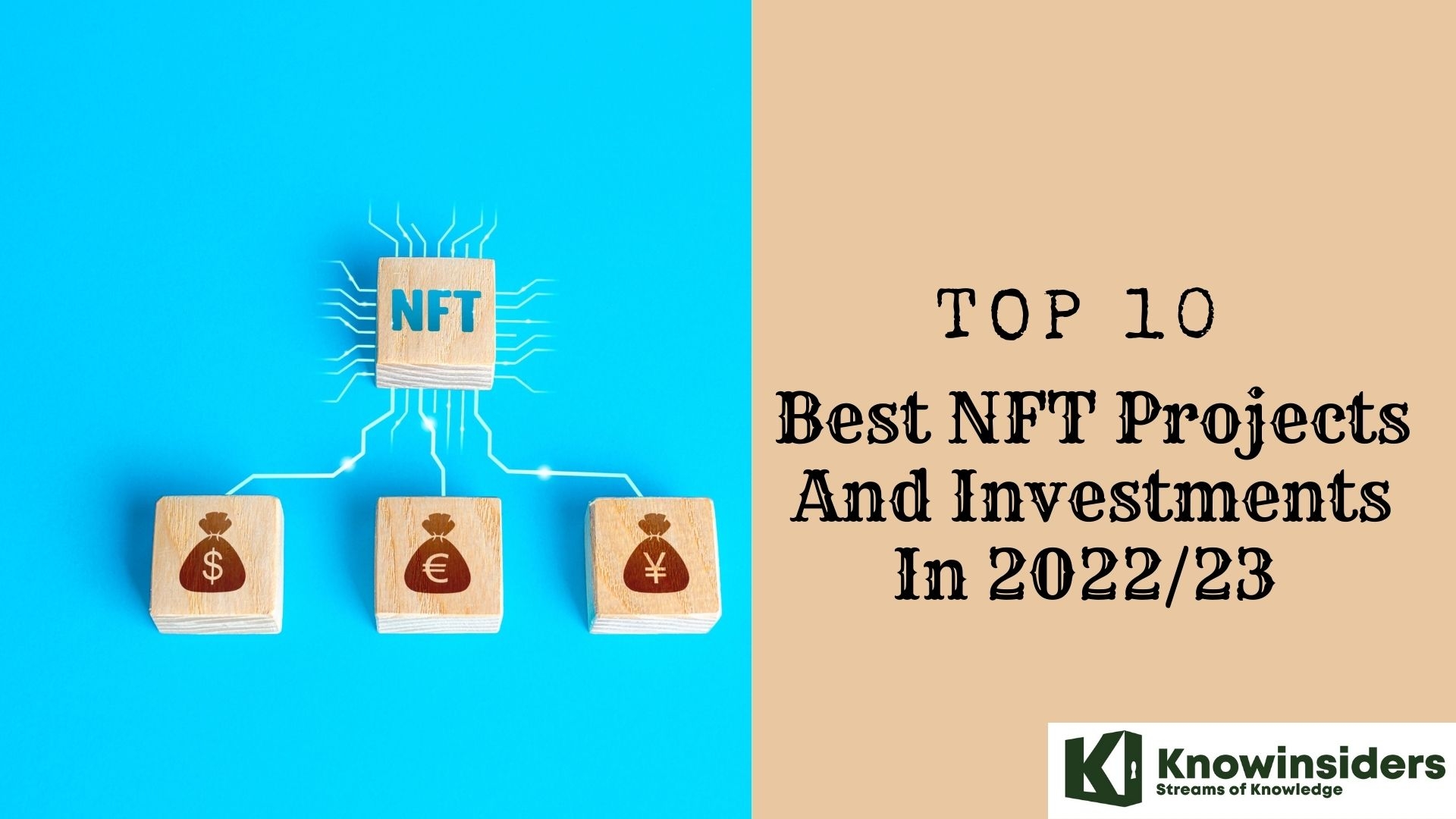 |
| Top 10 Best NFT Projects And Investments In 2022/23 |
| Table of Content |
Certain non-fungible token investments have vastly outperformed cryptocurrencies like Bitcoin, Ethereum and Dogecoin in the past months. Celebrities among the likes of Jimmy Fallon, Jay-Z and Justin Bieber have bought NFTs and shown them off on their Twitter profiles, increasing the demand for limited-edition tokenized art.
Touted as the best NFT investment of the last year, Bored Ape Yacht Club released its 1st collection of NFTs in the spring of 2021. Taking over a day to sell out at just $200 each, the cheapest Bored Ape currently for sale is around $400,000! Not only this, but Ape holders were airdropped Mutant Apes and ApeCoin for simply owning their Apes, which amounts to an extra $250,000+ in profit. While most NFTs haven't shown similar returns, this is a prime example of how profitable NFT investing can be when done right.
Take a look at these 10 best NFT projects and investments in 2022/23.
What Is an NFT?
An NFT is a digital asset that represents real-world objects like art, music, in-game items and videos. They are bought and sold online, frequently with cryptocurrency, and they are generally encoded with the same underlying software as many cryptos.
Although they’ve been around since 2014, NFTs are gaining notoriety now because they are becoming an increasingly popular way to buy and sell digital artwork. The market for NFTs was worth a staggering $41 billion in 2021 alone, an amount that is approaching the total value of the entire global fine art market.
NFTs are also generally one of a kind, or at least one of a very limited run, and have unique identifying codes. “Essentially, NFTs create digital scarcity,” says Arry Yu, chair of the Washington Technology Industry Association Cascadia Blockchain Council and managing director of Yellow Umbrella Ventures.
This stands in stark contrast to most digital creations, which are almost always infinite in supply. Hypothetically, cutting off the supply should raise the value of a given asset, assuming it’s in demand.
But many NFTs, at least in these early days, have been digital creations that already exist in some form elsewhere, like iconic video clips from NBA games or securitized versions of digital art that’s already floating around on Instagram.
Famous digital artist Mike Winklemann, better known as “Beeple,” crafted a composite of 5,000 daily drawings to create perhaps the most famous NFT of 2021, “EVERYDAYS: The First 5000 Days,” which sold at Christie’s for a record-breaking $69.3 million.
Anyone can view the individual images—or even the entire collage of images online for free. So why are people willing to spend millions on something they could easily screenshot or download?
Because an NFT allows the buyer to own the original item. Not only that, it contains built-in authentication, which serves as proof of ownership. Collectors value those “digital bragging rights” almost more than the item itself.
How Is an NFT Different from Cryptocurrency?
NFT stands for non-fungible token. It’s generally built using the same kind of programming as cryptocurrency, like Bitcoin or Ethereum, but that’s where the similarity ends.
Physical money and cryptocurrencies are “fungible,” meaning they can be traded or exchanged for one another. They’re also equal in value—one dollar is always worth another dollar; one Bitcoin is always equal to another Bitcoin. Crypto’s fungibility makes it a trusted means of conducting transactions on the blockchain.
NFTs are different. Each has a digital signature that makes it impossible for NFTs to be exchanged for or equal to one another (hence, non-fungible). One NBA Top Shot clip, for example, is not equal to EVERYDAYS simply because they’re both NFTs. (One NBA Top Shot clip isn’t even necessarily equal to another NBA Top Shot clip, for that matter.)
What Are NFTs Used For?
Blockchain technology and NFTs afford artists and content creators a unique opportunity to monetize their wares. For example, artists no longer have to rely on galleries or auction houses to sell their art. Instead, the artist can sell it directly to the consumer as an NFT, which also lets them keep more of the profits. In addition, artists can program in royalties so they’ll receive a percentage of sales whenever their art is sold to a new owner. This is an attractive feature as artists generally do not receive future proceeds after their art is first sold.
Art isn’t the only way to make money with NFTs. Brands like Charmin and Taco Bell have auctioned off themed NFT art to raise funds for charity. Charmin dubbed its offering “NFTP” (non-fungible toilet paper), and Taco Bell’s NFT art sold out in minutes, with the highest bids coming in at 1.5 wrapped ether (WETH)—equal to $3,723.83 at time of writing.
Nyan Cat, a 2011-era GIF of a cat with a pop-tart body, sold for nearly $600,000 in February. And NBA Top Shot generated more than $500 million in sales as of late March. A single LeBron James highlight NFT fetched more than $200,000.
Even celebrities like Snoop Dogg and Lindsay Lohan are jumping on the NFT bandwagon, releasing unique memories, artwork and moments as securitized NFTs.
NBA Top Shot Is a Hot NFT Use Case
One of the most popular non-fungible tokens in recent days is NBA Top Shot, a partnership between Dapper Labs (makers of the CryptoKitties game) and the National Basketball Association (NBA). The NBA licenses individual highlight video reels, among other content, to Dapper Labs, and they digitize the footage and make it available for sale to consumers. Each reel shows a video clip, such as a famous player's basketball dunk, some featuring different angles and digital artwork to make them unique. Even if someone made a perfect copy of the video, it can be instantly recognizable as a counterfeit. The venture has already generated $230 million in sales, and the company just also received $305 million in funding from a group that includes Michael Jordan and Kevin Durant.
These video reels are selling at high prices. Among the most popular:
- LeBron James “Cosmic” Dunk: $208,000
- Zion Williamson “Holo MMXX” Block: $100,000
- LeBron James “From the Top” Block: $100,000
- LeBron James “Throwdowns” Dunk: $100,000
- LeBron James “Holo MMXX” Dunk: $99,999
- Steph Curry “Deck the Hoops” Handles: $85,000
- Giannis Antetokounmpo “Holo MMXX” Dunk: $85,000
- LeBron James “From the Top” Dunk: $80,000
These unique NBA moments are minted and released into the marketplace via “pack drops.” The most common sell for only nine dollars, but more exclusive packs can sell for much more.
Now that you’ve understood what is NFT used for, and the various ways you can benefit from it, let’s take a look at how it is specifically different from other forms on cryptocurrency.
Why Are Non-Fungible Tokens Becoming Popular?
NFTs have actually been around since 2015, but they are now experiencing a boost in popularity thanks to several factors. First, and perhaps most obviously, is the normalization and excitement of cryptocurrencies and the underlying blockchain frameworks. Beyond the technology itself is the combination of fandom, the economics of royalties, and the laws of scarcity. Consumers all want to get in on the opportunity to own unique digital content and potentially hold them as a type of investment.
When someone buys a non-fungible token, they gain ownership of the content, but it can still make its way over the Internet. In this way, an NFT can gain popularity — the more it’s seen online, the more value it develops. When the asset is sold, the original creator gets a 10 percent cut, with the platform getting a small percentage and the current owner getting the rest of that revenue. Thus, there is potential for ongoing revenue from popular digital assets as they are bought and sold over time.
Authenticity is the name of the game with NFTs. Digital collectibles contain distinguishing information that make them distinct from any other NFT and easily verifiable, thanks to the blockchain. Creating and circulating fake collectibles doesn’t work because each item can be traced back to the original creator or issuer. And, unlike cryptocurrencies, they can’t be directly exchanged with one another (like baseball cards in real life) because no two are the same.
How to Buy NFTs?
Having understood what NFTs are used for and its specific advantages over other cryptocurrencies, you might want to venture into buying NFTs. If so, you will need to acquire some essential items before you do it:
- You’ll need a digital wallet that allows you to store your NFTs and cryptocurrencies.
- Then you need to purchase some cryptocurrency depending on what currencies your NFT provider accepts, most likely Ether. You can use platforms like OpenSea, Coinbase, Kraken, PayPal, etc., to buy cryptocurrencies.
- Once you’ve made your cryptocurrency purchase, you can move it from the exchange to your wallet.
Bear in mind, that many exchanges charge a small percentage of your crypto purchase transaction as fees.
List of top 10 best NFT projects and investments
1. Axie Infinity
2. CryptoPunks
3. Bored Ape Yacht Club
4. Meebits
5. Art Blocks
6. NBA Top Shot
7. CloneX
8. Azuki
9. The Sand Box
10. Imaginary Ones
What are the 10 best NFT projects and investments in 2022/23?
1. Axie Infinity
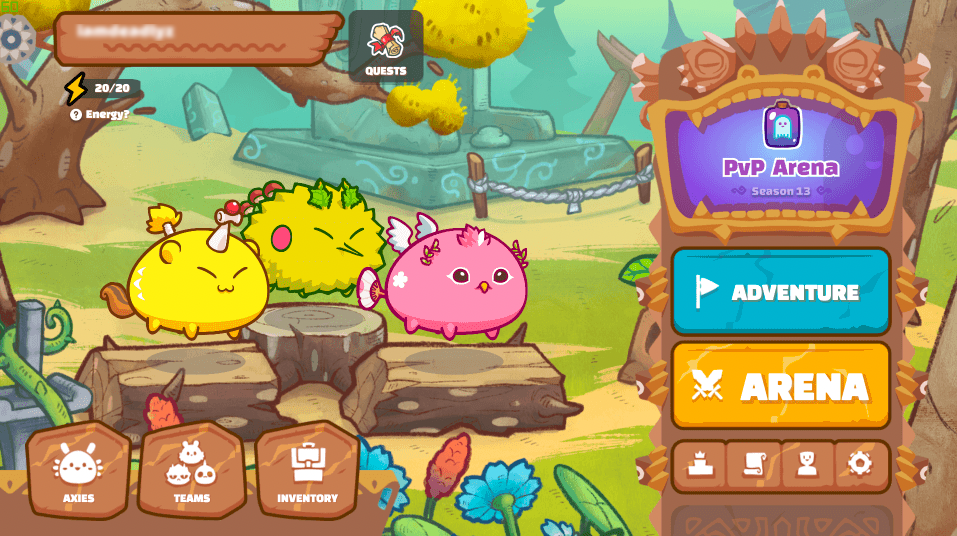 |
| Photo: Sky Mavis |
If you were to close your eyes, fall asleep, and wake up on July 6, 2016, you would rise to find that the price of bitcoin was trading between $670 and $681, the iPhone SE was the newest phone in town, and the soon-to-be-craze known as Pokémon GO was just being released. For many, this probably sounds like a lifetime ago. it is astonishing to think about how much technological change has occurred in six short years.
About one year later, in December 2017, the idea to combine aspects of the crypto universe with online gaming would come to life in the minds of the people at Vietnamese studio Sky Mavis.
Axie Infinity Universe
Axie Infinity is an online game universe revolving around Pokémon-esque creatures known as Axies. Players can collect Axies as virtual pets with aspirations to battle, breed, collect, raise, and build kingdoms for their Axies. What makes Axie Infinity different from other online games is the synergy it has established between standard online gaming and blockchain. The Ethereum-based game utilizes a design that allows players to own their virtual assets and rewards players who are able to reach an advanced level of skill.
To get started, users need to work through a multistep setup process to connect digital wallets and their Axie Infinity account, which is all detailed in the game’s onboarding guide.
Once the accounts are successfully connected, the player can interact with the digital marketplace. To play, users need three Axies. Once the player has three Axies, they can download the application and start playing. There is a lot of nuance around the cost of an Axie since the average price that is paid fluctuates based on factors such as rarity, experience, attributes, and type. As of this writing, the least expensive Axies, known as “Floor Axies,” cost around $30. Floor Axies are often weak in battle and likely won’t be able to earn much for its owner. As of this writing, players can expect to pay a few hundred U.S. dollars for a usable team of Axies and upward of $1,000 for a rare Mystic Axie.
How does Axie Infinity work?
As mentioned, Axie Infinity is built entirely around NFT items—and right now, there’s no way to play unless you buy the three Axie NFTs needed to create your first team.
They can be purchased from the official Axie marketplace via your Ronin wallet, which you’ll connect to the game. You can play on PC, Mac, Android, or iOS and take your Axies into battle to win rewards.
What’s so special about it?
Axie Infinity takes the fun and alluring premise of Pokémon and adds the element of ownership. These Axies belong to you and yield tangible rewards: Smooth Love Potion (SLP) crypto tokens that can be exchanged for money. The upfront costs will be a major roadblock for many players, but it’s a game that rewards players the more time and effort that they put into it.
"Play to earn" might sound like a marketing phrase or a gimmicky hook, but we’re already seeing evidence of a player-owned economy taking shape around the game.
For example, there are thousands of “Axie scholars” through programs like Yield Guild Games and others, in which Axie owners loan their NFTs to other players to use and earn with. The profits are divided amongst the parties; in countries like the Philippines and Indonesia, people are playing Axie to support their families. Whether that proves to be a sustainable model remains to be seen, but it’s a potentially powerful and revolutionary idea that is already being put into practice.
How to get started with Axie Infinity
Here’s the hang-up: you will need three Axie NFTs to start playing Axie Infinity, though it's become more affordable to play in recent months. Whereas prices for individual Axies on the marketplace once hovered around $225-$250 apiece, now the cheapest Axies available cost just $28. Keep in mind that your Axies can be resold, plus they generate rewards through gameplay.
Now that Axie Infinity has migrated assets from Ethereum to its Ronin sidechain, you will need to create a Ronin wallet and have an Ethereum wallet (like MetaMask) as well. Once you have a Ronin wallet set up, you can use the Ronin bridge to transfer ETH over to Ronin, where it becomes WETH (Wrapped ETH). You can then use this to purchase Axies.
Create an account on the Axie Infinity website and download the game to your PC or Mac. You can download an Android APK to install on a smartphone or tablet, as well. The game has also been accessible for iOS via a beta release through Apple’s TestFlight program but is currently unavailable as of this writing.
Whichever version you choose, you’ll need to pair your Ronin wallet to your account, and then sync your Axies from the wallet to the game to start playing.
Where can you buy AXS?
AXS is available from cryptocurrency exchanges such as Binance, FTX, and Huobi Global, although it is not currently sold by Coinbase or Binance.US, for example. Decentralized exchanges like Uniswap and SushiSwap offer it, however.
Here’s how you can purchase AXS from Uniswap. You will need a crypto wallet with ETH or another Ethereum-based ERC20 token to trade at Uniswap. If you need ETH, you can purchase it with fiat at Coinbase or Binance and then transfer it to your wallet.
Connect your wallet at Uniswap, select AXS from the list, and then choose which asset you want to swap for it. Enter the amount you want to trade and Uniswap will tell you how much AXS you will receive in return. If the numbers square up to your liking, click “Swap” and the transaction will go through.
The futureAxie Infinity blew up in a big way in late June 2021, not long after the Ronin transition and the announcement of a $7.5 million Series A funding round featuring Mark Cuban and Alexis Ohanian, among others. Sky Mavis also has support from major game publisher Ubisoft, which mentored the team in its Entrepreneur’s Lab accelerator program and aided the Ronin launch. A Series B funding round in October 2021, led by Andreessen Horowitz, saw Sky Mavis reportedly valued near $3 billion. By September 2021, Axie Infinity had already hit a total NFT transaction volume of over $2 billion. (That was up to $4 billion by March 2022.) Long-term players were rewarded with a $60 million airdrop of AXS tokens in September 2021, followed a month later by the introduction of a staking service for AXS. In November 2021, Axie's Ronin sidechain added its own decentralized exchange (DEX), Katana, making it easier for Axie players to swap tokens without having to bridge to Ethereum. Although, Axie Infinity saw declining token prices and NFT trading volume from December 2021 through the first quarter of 2022, it started implementing economic changes to try to combat the fall. For example, the game is now issuing significantly less SLP tokens after the price of the reward token fell to less than a penny apiece. The explosion of interest in play to earn has made improving Axie Infinity's often-clunky UX and onboarding process a priority for Sky Mavis. Co-founder Aleksander Leonard Larsen has highlighted that over half of new Axie players have never used any crypto application before, noting that "it's really hard to begin playing Axie right now." As part of this overhaul, Axie Infinity plans to eventually roll out a way of playing without requiring players to buy Axies upfront, by giving new users non-transferrable Axies with "limited earning potential." Increased interest in play to earn has also brought negative attention from hackers. In March 2022, the Axie ecosystem suffered a devastating attack, when about $552 million worth of ETH and the USDC stablecoin were stolen from the bridge that connects Axie’s Ronin sidechain to Ethereum. Sky Mavis pledged to either recover the funds or reimburse users. The stolen funds were worth $622 million by the time the attack was revealed nearly a week after it took place. Next up on the game's expansive roadmap is the addition of gameplay based around its land NFTs, which let players customize the terrain and develop shareable experiences. It’s another aspect that will help expand Axie Infinity beyond simply battling and breeding monsters. Other updates earmarked for 2022 include the expansion of the AXS ecosystem to include governance and expanded play-to-earn rewards, as well as the mainstream release of Axie Infinity on iOS and Android devices. |
2. CryptoPunks
 |
| Photo: CryptoPotato |
CryptoPunks is one of the earliest non-fungible token projects developed on the Ethereum blockchain. The project consists of 10,000 algorithmically generated 24x24 pixel portraits featuring random attributes such as the person wearing a hat or smoking a pipe.
While you could originally acquire a CryptoPunk for free (aside from a transfer fee), the rarity of the digital portraits and the increased demand for NFTs has sent the price skyrocketing.
How was CryptoPunks started?
CryptoPunks was created by Larva Labs, a two-person development team working on all sorts of projects from mobile games and utilities to web infrastructure to digital design and art. The team developed a pixelated character generator with inspiration from the London punk scene and cyberpunk films and novels.
They generated 10,000 unique characters and hosted them on the Ethereum blockchain in 2017. Anyone interested could claim a CryptoPunk for free. They'd only have to pay the gas fee to cover the computing energy, which was considerably lower before NFTs and DeFi took off. Larva Labs kept 1,000 portraits for themselves, but the rest were quickly claimed. The only way to acquire a CryptoPunk today is to purchase it directly from its owner.
What makes CryptoPunks special
There are a few things that make CryptoPunks special as a project.
First of all, it's one of the earliest NFT projects on the Ethereum blockchain. It started months before the launch of CryptoKitties, a popular cat-breeding blockchain game/NFT project. Being one of the first projects of its kind gives it value.
Second, only 10,000 CryptoPunks will ever exist. This creates scarcity among collectors.
Some CryptoPunks portraits may be more valuable than others based on their attributes (or lack thereof). There are just nine aliens and 24 apes, 44 wear a beanie, 48 wear a choker, 78 have buck teeth, and 128 have rosy cheeks. Eight CryptoPunks have no defining attributes, and one (#8348) has seven attributes.
A CryptoPunk with multiple rare attributes can be worth a lot. For example, CryptoPunk #7804, an alien (9) wearing small shades (378), a hat (254), and smoking a pipe (317), fetched more than $7.5 million.
But rarity isn't the only factor in how much a CryptoPunk is worth. Some portraits are desired merely because a collector likes the look.
How to buy a CryptoPunks NFT
Before you can buy an NFT on an NFT marketplace, you'll need to set up a cryptocurrency wallet such as MetaMask. Your wallet is a unique address on the blockchain that anyone can see the contents of, but only you are able to access it.
Once you've established your wallet, you need some Ether (CRYPTO:ETH). You can either buy the token through the service provided by the wallet, or send Ether you already own on an exchange such as Coinbase (NASDAQ:COIN) to your wallet address.
Make sure you set up your wallet to work with your web browser using its extension.
With Ether in hand, so to speak, you're ready to purchase a CryptoPunk. You can view CryptoPunks for sale on Larva Lab's website. When you find a CryptoPunk you'd like to purchase, click on it, and then click the buy button on its page. Your browser will ask you to connect your wallet and confirm the transaction.
Once you confirm the transaction, the Ether will go to the seller, and you'll see the NFT show up in your wallet.
What the future looks like for CryptoPunks
CryptoPunks benefited from the boom in collectors' items during the COVID-19 pandemic combined with the increased interest in cryptocurrency and other blockchain projects. It was a perfect storm to send prices soaring.
Ultimately, the price of CryptoPunks portraits is determined by supply and demand. With supply fixed, the question NFT investors must ask themselves is whether they think demand will continue to increase or if we've reached a peak.
It's possible CryptoPunks will go from relatively fringe collectors' items to mainstream art since several have been up for auction at Christie's and Sotheby's. That could bring in new bidders for the popular NFTs. But it seems more likely that those interested in the tech/art project already know about it.
In other words, we may have already hit peak demand for the NFTs. That said, it's still possible for individual CryptoPunks with especially desirable attributes to maintain or climb in price even if the overall market might not be as valuable as its peak.
3. Bored Ape Yacht Club
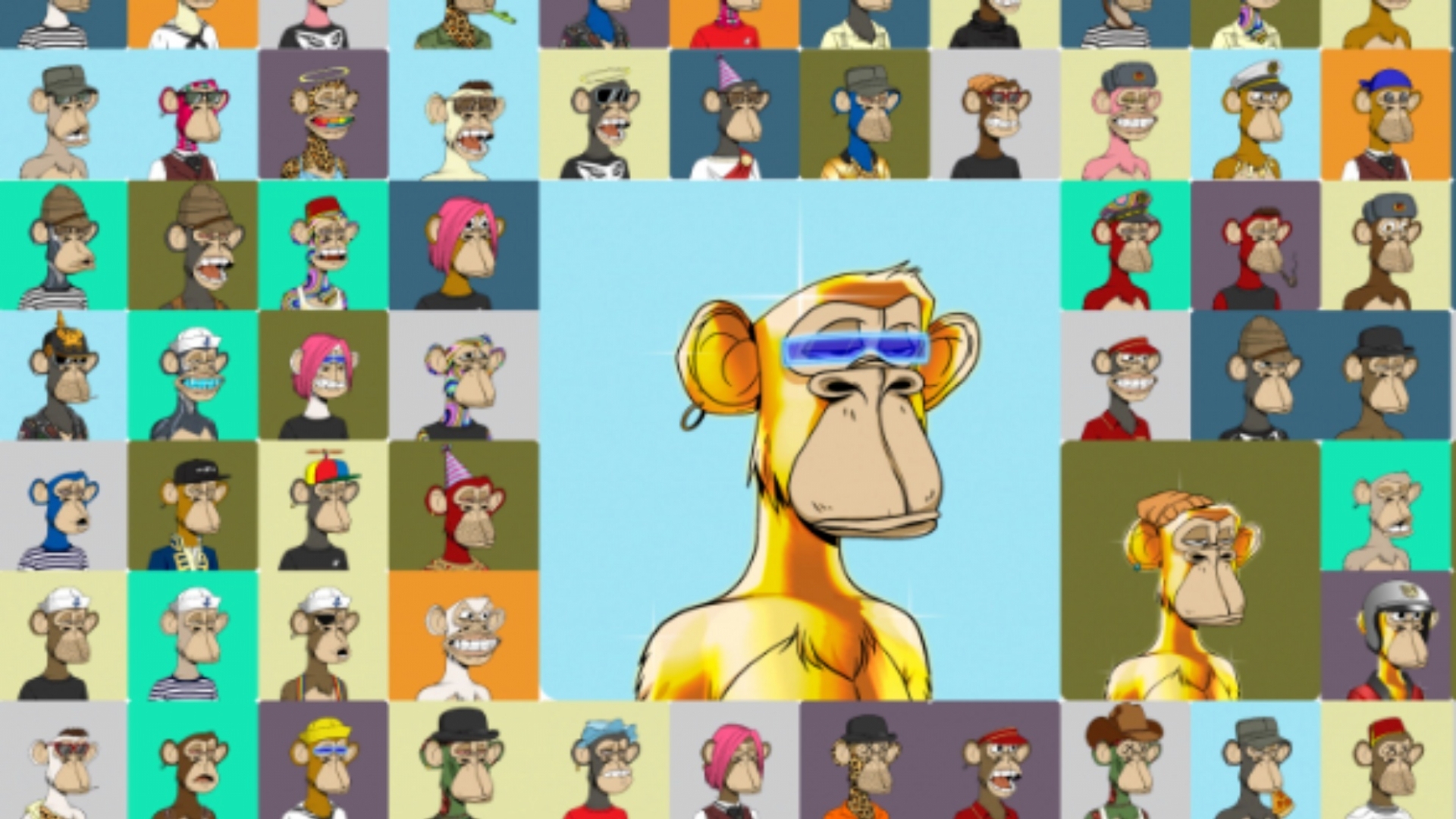 |
| Photo: MARCA |
Bored Apes are a collection of 10,000 unique NFTs based on the Ethereum blockchain. The Bored Apes are grungy simian avatars with different characteristics—some rarer than others. For example, only 5% of Bored Apes have red fur, and 3% have a biker vest. The rarer the traits of a Bored Ape, the more expensive it's likely to be.
As is the case with all NFTs, the Bored Ape is not the asset itself—instead, it's a kind of certificate of ownership or, in this case, a passkey.
Bored Apes are the cornerstone of an elite movement called, you guessed it, the Bored Apes Yacht Club. Your Bored Ape doubles as your Yacht Club membership card and grants access to members-only benefits—the first of which is THE BATHROOM, a community drawing board where Bored Ape owners can leave digital graffiti. Bored Ape ownership also comes with access to a private Discord server where you can hang out and chat with other owners.
All the Bored Apes were initially available on a first-come, first-served basis and were priced the same—0.8 ETH or about $190 at release. But, because they all sold out quickly, they are now available on the secondary market OpenSea, which is like eBay for NFTs. As of writing, the floor price for an Ape on OpenSea is 108 ETH, or about $368,000.
Who's Behind the Bored Ape Yacht Club?
The Bored Ape Yacht Club was created by four founders via their company Yuga Labs, in 2021. The founders go by cartoonish pseudonyms: Gargamel, Gordon Goner, Emperor Tomato Ketchup, and No Sass. Or at least they did until February 2022, when BuzzFeed revealed the identities of Gordon Goner and Gargamel.
It turns out Gargamel is Greg Solano, a writer and book critic, and Gordon Goner is 35-year-old Wylie Aronow. Both went on to reveal their true identities on Twitter alongside their Bored Apes. Following that, Emperor Tomato Ketchup and No Sass went ahead and did the same.
Per a Rolling Stone interview, the founders drew inspiration for BAYC from modern NFT OGs like CryptoPunks, which have become a sort of cultural currency. Like Bored Apes, CryptoPunks are also a 10,000-strong collection of unique NFT avatars, and they also cost a fortune—with one selling for a whopping $11.7 million. If you haven't already, catch up with news about CryptoPunks and why they're so expensive.
For BAYC, the plan was to combine the collectible-art component of NFTs with community membership, essentially giving NFT ownership some utility beyond just being cult symbols of crypto cool kids.
Why Are Bored Apes So Expensive?
To the most pressing question of all: why do Bored Apes cost so much? Even the most exclusive club memberships in the US do not cost $368k. What's the fuss about? Let's see.
Utility
Bored Ape art is not only valuable because it serves as a digital identity—but also because of the accompanying commercial usage rights. Not only can Bored Ape owners re-sell the NFT for a profit, but they can also sell spinoff products based on the art.
One Bored Ape owner set up a Twitter account for his ape, spinning an entire backstory where the ape is Jenkins, a valet at the Yacht Club. Jenkins is personable, crypto-savvy, and tells amazing stories—it's the perfect combo for a successful Twitter account.
Jenkins' story is made all the more endearing by the fact that he was the cheapest ape in the collection, which influenced his character as a valet. On a basic level, people are drawn to the classic "rise of the underdog" story.
In September 2021, Jenkins was signed to a real-life agency to explore publishing opportunities across books, podcasts, films, TV, and more. He'll also have his own biography, written in part by New York Times bestselling author Neil Strauss.
Jenkins' owners are creating a sort of sub-BAYC community by allowing users to buy NFTs that serve as rights to vote on the creative direction of Jenkin's first book release. It's essentially a massive community project, except in this case, people are paying to participate.
The potential for opportunities like this drives up the value of a Bored Ape.
Brands have also 'aped in', with Arizona Iced Tea purchasing a Bored Ape Yacht Club NFT in August 2021 and using it in marketing materials. Adidas also purchased a BAYC NFT intending to develop a character and backstory.
Scarcity
Some basic economics here: because there are only 10,000 Bored Apes, the supply of the NFT art is pretty limited. Coupled with the massive interest in the brand, we have a high-demand/low-supply dynamic that inevitably drives prices up.
To boot, some Bored Ape avatars within the same collection are rarer than others. Each Ape is a one-of-a-kind, randomly generated combination of 170 traits, such as background color, earrings, expression, headwear, clothing, etc. This derived scarcity also contributes to the high prices of some Bored Apes.
Exclusive content
BAYC offers exclusive content benefits to Bored Ape holders, some of which are spelled out in the detailed roadmap on the Bored Ape Yacht Club website. The roadmap is a sort of to-do list that the founders intend to check off when they hit their target sales percentages.
In keeping with the 10th goalpost of finding "new ways to ape with our friends", the BAYC have gotten even more creative with their community-building tactics.
For example, in June 2021, every Bored Ape holder was allowed to 'adopt' a canine companion NFT for free (only paying for 'gas', which is the fee you have to pay for processing transactions on the Ethereum blockchain). That's how Bored Ape Kennel Club was born. The club used secondary sales of these canine companions to raise $1 million for animal shelters.
While these dogs were free for BAYC holders, the current floor price for a Bored Ape Kennel Club dog is 7.60 ETH or about $17,000 at current ETH prices.
In August 2021, BAYC created 20,000 mutant Apes. They released 10,000 to the public for 3 ETH to bring new members on board. It worked— the entire set sold out within an hour, generating $96 million in the process.
But, all Bored Ape owners got a free airdrop of 10,000 digital vials of mutant serums with which they could mint new mutant apes from existing Bored Apes. And they could sell the new NFT on the secondary market for profit.
And in March 2022 — the BAYC launched their own cryptocurrency, the APE coin, and airdropped $ape tokens to each BAYC and MAYC holder. Owners of BAYC NFTs will be able to claim approximately 10,000 ApeCoin each, which amounts to about $100,000 for each holder.
The APE coins are already finding utility within the BAYC community—Snoop Dogg and Wiz Khalifa released an eight-track NFT mixtape for $APE holders.
To top it off, BAYC has started hosting club members at real-life, offline events that will become a yearly tradition. BAYC held its first annual Ape Fest in November 2021, which included a gallery exhibition, a costume contest, and a party on a real 1000-capacity yacht off the coast of Manhattan. Lil Baby, the Strokes, Questlove, Beck, Chris Rock, and Aziz Ansari all made surprise appearances at the grand finale "warehouse" party in Brooklyn.
Celebrity Backing
Jimmy Fallon, Post Malone, Mark Cuban, Paris Hilton, Snoop Dogg, Stephen Curry, Eminem, and Shaquille O'Neal all own Bored Apes. And it's a well-known fact that involving celebrities in anything can raise interest—and prices.
Because of the significant celeb involvement, Bored Apes have become a status symbol — like a digital Veblen good — the more expensive they are, the more people want to have one.
Early Entrance
While Bored Apes aren't the first NFT collection, they're one of the few collections out there. Not to discredit the innovation, but the novelty does contribute to the movement's success. CryptoPunks, for example, are valuable primarily because they represent the first NFT collection.
BAYC bought Cryptopunks in early March 2022—an acquisition that significantly tackles competition and establishes their position as pioneers of the NFT-community movement. BAYC plans to grant intellectual property and commercialization rights to CryptoPunks owners, just as they have with Bored Ape owners. Inevitably, this will increase demand, which will lead to a price increase.
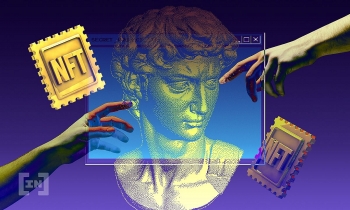 What Is an NFT? And Everything You Need to Know About NFTS What Is an NFT? And Everything You Need to Know About NFTS |
4. Meebits
 |
| Photo: Larva Labs |
Meebits are 3D voxel characters generated by a custom algorithm and living on the Ethereum Blockchain. The ERC-721 smart contract governs their ownership, and they are compatible with all the Ethereum based marketplaces & services.
These are 20,000 unique 3D Meebits and they look similar to characters from popular games like Minecraft or Roblox. You can use these NFT characters in several games, virtual worlds, etc. You can also animate, play, and exchange these 3D voxel characters.
Larva Labs launched the project in May 2021, and within a short time, it surged like waves. The developers of these projects aim to provide the same experience as collecting cards and exchanging them with friends.
Larva Labs has gone one step ahead by attributing a wide range of use cases for the Meebits, and one such attribute is that you can trade Meebits for other Meebits.
Meebits are hyped not because they are new to the market or possess unique 3D voxel characters, but because they come from the same team that created the super-popular CryptoPunks. If CryptoPunks were ideal 2D avatars for Web2, then Meebits are the ideal 3D avatars for the metaverse, and the Web3 ecosystem.
CryptoPunks pioneered the NFT movement by creating unique 2D (8bit style) collectibles. Meebits disrupted the industry trend by introducing unique 3D voxel characters with whom you can play in metaverse.
What can you do with Meebits?
Here are a few things that Meebits allow holders to do:
Customizing your 3D voxel character.
Rendering 3D Meebit into 2D pixel art.
Animating them and making your avatars perform actions.
Use them as avatars in metaverse like The Sandbox, Decentraland, Somium Space, and Cryptovoxels.
Use them as your social media account pfps, and flaunt them in your network.
Meebits Community
Soon as the Meebits launched, the community gathered to create a DAO (Decentralized Autonomous Organization) known as MeebitsDAO, that will support the development of Meebits ecosystem & metaverse.
Funds collected from the MeebitsDAO will help NFT projects develop and acquire virtual lands on metaverse to inhabit these 3D avatars.
The Meebits DAO has received tremendous response from the community and is now backed by the devs too.
Why are Meebits so popular?
Initially, only 9000 Meebits were available for sale through a dutch style auction. Every single Meebit was sold for 2.5 ETH, with the price gradually declining to zero as the avatars diminished. Rest NFTs went to the holders of the CryptoPunks and Autoglyphs.
Holders can redeem a Meebit with punk or glyph by a simple gas fee transaction.
Since then, the collection has topped the charts by acquiring millions in sales due to its rarity and scarcity. It became the 7th all-time top collection in four months by generating $127 million in sales volume.
Meebit #10761 is one of the most expensive Meebits ever sold for a whopping 700 WETH (2.69 million). It has the “Dissected” type and features black pants, a bald hairstyle, and a customized hoodie.
Last month another Meebit was sold for $2.1 million, which is a “Pig” category. At least 10 Meebits have been sold for more than $1 Million.
Not every Meebit needs millions to acquire; you can purchase some of them at a low price. The average price to buy a Meebit is around $22k (as of last 7 days).
5. Art Blocks
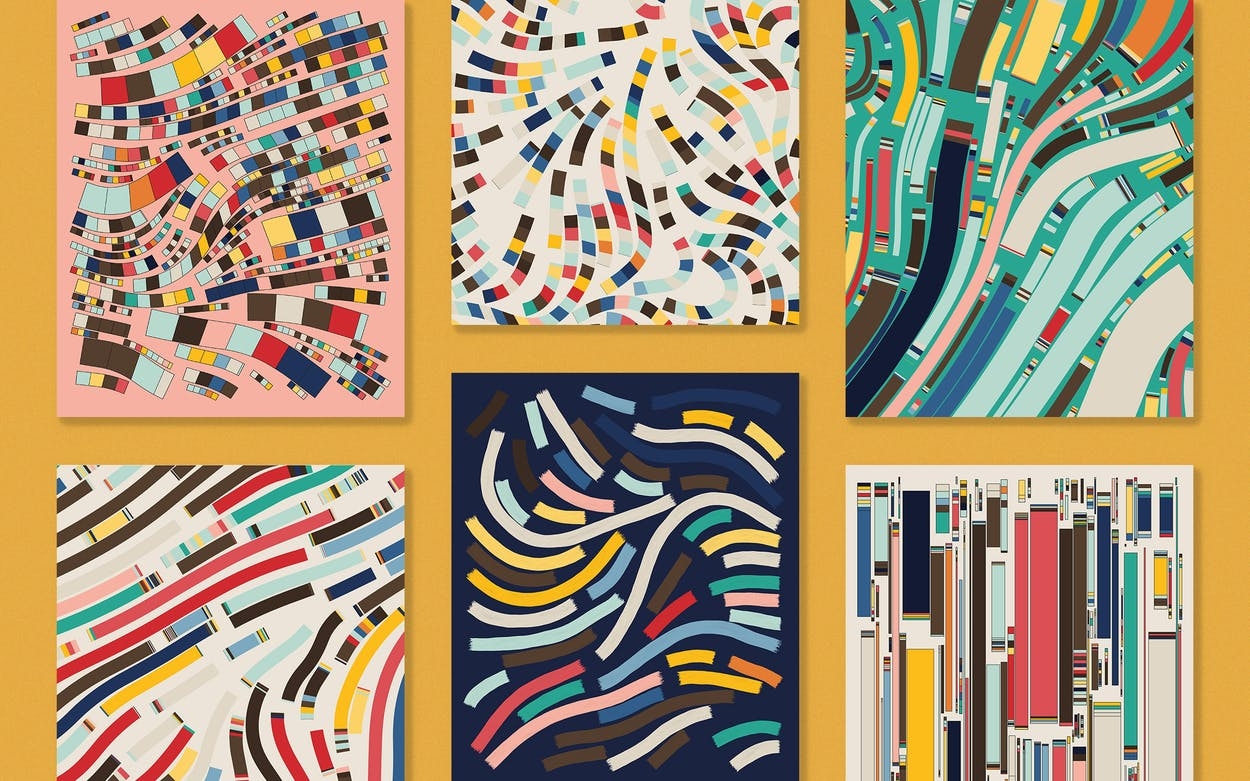 |
| Photo: inforcryptown |
Art Blocks is an Ethereum-based NFT creation platform where artists can create and sell on-demand generative art. Each output is one of a kind, and buyers typically don’t know how the artwork will exactly look before buying it.
This programmatic, or generative, type of art uses algorithmic processes that make the art creation autonomous. Random factors are introduced into the code to make each art piece unique.
Artists upload their algorithms to the Art Blocks platform and set the maximum number of editions to be minted. In some cases, collectors can pick a style from the options to generate the art. The artwork is minted in real-time on the blockchain as soon as it is purchased, and the output sent is a randomly generated art piece as an ERC-721 NFT, sent directly to the collector’s wallet.
Well-known NFT profile picture projects, like Bored Ape Yacht Club or Crypto Punks, also use the generative art process to randomize the creation of the 10,000 NFTs in their collection.
Some Art Blocks projects include interactive artworks, as in the case of Asterisms, while others can be static, as in the case of Archetype.
Art Blocks 101: How Art Blocks Works
To best understand Art Blocks, it’s helpful to know the basics of how NFTs work.
Non-Fungible Tokens, or NFTs, are tokens that are completely unique, and valued as such. So, Art Blocks takes control over the characteristics that make a project unique and gives it to an algorithm to generate. Since Art Blocks is built on the Ethereum (ETH) network, all the Art Blocks pieces are standard ERC-721 compliant non-fungible tokens.
As such, an artist creates a piece of code that is uploaded to Art Blocks, and random combinations of the variables are generated. Most Art Bocks projects are created using a JavaScript framework that supports creative coding called p5.js.
Upon submitting their code to Art Blocks, the following sequence happens behind the scenes:
1.A seed, or randomized hexadecimal string is made.
2.Each element in the seed specifies an attribute of the artwork within the parameters that are consistent with the artwork’s aesthetic. For example, the Chrome Squiggle algorithm wouldn’t just start randomly dropping emojis in the works, unless that’s what the creator specified in the programming.
3.Finally, the end-product is created. The variations all come down to what the algorithm spits out– one could specify a yellow hue, whereas one could be green, and so on.
The final NFT could be anything from a 3D model, interactive experience, or simply just a static image.
There are three types of projects on the Art Blocks platform.
Curated: These projects include the collections which are approved by the Art Blocks’ curation board. They represent the platform’s official vision the best. The projects in this category are released in quarterly sets.
Playground: These projects don’t undergo a deep review process, and are more experimental in nature. Only those artists who have already released curated projects on the platform before can be chosen for the Playground projects. It’s a way Art Blocks supports the artists it already works with to play around with novel ideas. An artist can only have one active playground project at a given time. To submit a new project of this type, the artist must release another curated project first.
Factory: This general collection is open to artists who are not considered for the curated collections. The artists must sell all their Factory artwork before releasing another Factory project on the platform. Artists must also wait for two months in-between project launches.
Art Blocks projects are typically sold as Dutch auctions; the price starts at an initial minting price and decreases by a fixed amount periodically until it reaches the lowest price that the project will sell out.
The most popular secondary market for ETH-based NFTs is OpenSea, and the various Art Blocks are particularly popular.
Per Cryptoslam data, the total sales volume is $1,161,060,106.15 as of the 16th of January 2022.
6. NBA Top Shot
 |
| Photo: nbatopshot |
The NBA’s Top Shot product is a blockchain-based virtual trading card platform. It was born out of a partnership between the NBA, the NBA Players Association, and Dapper Labs. The platform runs on the FLOW blockchain, which was created by Dapper Labs to be a “developer-friendly blockchain built to support the next generation of games, apps, and digital assets.”
Ultimately, the system operates just like trading cards, except that it combines NBA highlights and digital art. The NBA licenses reels to Dapper Laps, who then creates Moments from the footage. Moments are video highlights that have been attached to NFTs. Each has a unique digital serial number that guarantees the authenticity and indicates how rare the Moment is. Moments are the foundation that make up the Top Shot ecosystem.
Just like with trading cards, the team only makes a limited number of NFTs to create scarcity. This increases the rarity of specific Moments and, as a result, the financial value.
How does NBA Top Shot work?
NBA Top Shot allows users to buy, sell, and collect NBA NFTs that showcase influential “Moments” minted on the FLOW blockchain. Some Moments are rarer than others, with the rarest versions being worth the most.
Moments are minted in “Packs,” much like you’d expect from physical trading cards. Packs are minted in Sets as part of a Series. The timeline of each Series runs concurrently with the NBA season. As a result, each week or so, users can purchase new digital packs of NFT Moments that showcase the season’s most significant plays. Although pack drops are driven by the current season’s events, legacy fans needn’t worry about missing out on owning their favorite plays from the past. There is ample opportunity to collect retroactive Moments. For example, you can get Michael Carter-Williams’ 2013 dunk.
Ultimately, the project is meant to create a gamified experience for fans. With their NFTs, users can compete in Top Shot challenges and win prizes, moments, and scarce packs. For example, for one challenge, users had to submit 12 specific series 3 metallic silver fandom edition moments in order to earn a Series 3 2022 All-Star Standard pack.
What are the different NBA Packs and Moments?
There’s a lot more that goes into collecting than simply buying and selling your favorite Moment. As noted, each Moment comes from a Pack, each Pack is part of a Set, and you don’t know exactly what Moments you’ll get when you make a purchase. Ultimately, the rarity of a Moment can vary a lot depending on the type of set or Pack it comes from.
What are NBA Top Shot Moments?
Moments are video highlights that are separated into four categories: Common Moments, Fandom Moments, Rare Moments, and Legendary Moments. There is also an Ultimate rarity, but this class of highly coveted Moments is only attainable via auction with an edition size of one or three. Here’s a breakdown of how each works:
- Common: 96.6% of total moments. These are the largest edition sizes and are intended to be “shared, collective experiences for fans across the world.” They are easy to get and widely available. For example, there is Carmelo Anthony’s three-pointer. There are 40,000 NFT Moments in circulation.
- Fandom: There’s no set percentage for Fandom NFTs in Top Shots, a these are based on special experiences that correlate with specific events. For example, you may be able to buy a Moment at a real-life game that’s of significance. For example, there is Killian Hayes Assist. There were 2,776 NFTs of that Moment created, and they were made available exclusively to fans who were at the arena.
- Rare: 2.25% of total moments. Rare Moments on Top Shot are more exclusive and difficult to acquire. Typically, they feature historic plays from NBA legends. For example, there are 750 Moments of Trae Young’s shoulder shimmy three-pointer in circulation.
- Legendary: .11% of total moments. These Top Shot moments are extremely rare and difficult to acquire. For example, there are 120 Moments of Giannis Antetokounmpo’s block in the NBA Finals.
What are NBA Top Shot Packs?
Top Shot Moments are grouped into packs, which are created as sets in part of a series. These come in two overarching categories: Base and Non-Base.
Base Sets are exactly what they sound like: high edition sizes released regularly and at an affordable price (usually $9 each). Base Sets are dropped in order of Series and release – i.e. Series 1 had 12 releases. These typically always fall in the Common rarity category and contain three basic Moments that are great for those just starting out or those who are looking to round out a collection.
Non-Base Sets, on the other hand, come in all sorts of different variations. Non-Base sets will always contain a Common Moment, but also something Rare and/or Legendary. Non-Base set packs like “Playoffs,” “Premium Pack,” and “Run It Back” can all be differentiated by their much flashier packaging. Of course, these are also pricier.
 Top 10 Best Free Marketplaces to Mint an NFT Right Now Top 10 Best Free Marketplaces to Mint an NFT Right Now |
7. CloneX
 |
| Photo: NFT News Pro |
CloneX is an NFT collection of 20,000 algorithmically-generated 3D characters designed for metaverse interaction.
There have been some public statements conveying that traditional art, which once dominated the art world and people’s imaginations, is fading into everyone’s consciousness in the digital age. But based on current trends, it seems that traditional art is making a big comeback by adapting, instead of resisting, one of today’s most advanced technologies.
What is CloneX?
CloneX is a collection of 20,000 algorithmically generated 3D characters designed for metaverse interaction that launched on the Ethereum blockchain.
RTFKT, pronounced as ‘artifact,’ which backs the project, is a digital NFT studio that became famous for its NFT sneakers that earned fans worldwide, even the giant Nike.
The NFT studio has also partnered with various icons to launch multiple projects, and Murakami is the latest and biggest icon to hop on its ship.
The Magic of Takashi Murakami
Murakami lent his artistic touch to the collection by contributing NFT body parts, including eyes, clothes, helmets, mouth, and other significant character traits.
CloneX can be immediately recognized as possessing a ‘Murakami-element’ because of its cartoonish art, which is his signature style.
The collection was also inspired by the highly successful Crypto Punks collection, and the CloneX team hopes that they could generate rare items that can turn into collector’s items just like the Punks. CloneX’s characters are technically called ‘3D rigged models’, which means holders can use them as AR filters in games, cameras, and even in zoom meetings!
The first batch, which comprises 10,000 avatars, will be available for the existing RTFKT collectors in a 2-day pre-sale, after that, the other 10,000 characters will be made available to the public.
Before collaborating with RTFKT, Murakami partnered with other world-renowned icons, including Louis Vuitton and Kanye West.
He discovered RTFKT by accident on Instagram. And from there, he was smitten by the potential of NFTs and started communicating with the company’s team.
Even if they were separated by different backgrounds, Murakami and RTFKT shared the same passion for immersive creations.
RTFKT Caught in Controversies
Unfortunately, RTFKT also has its own share of bad news, like what happened on the recent NFT ‘Dutch auction’ of its CloneX collection.
Dutch auction works by starting with a high price, which is gradually reduced until someone accepts the price.
The auction was stopped midway because of an ”attack” on its website, forcing RTFKT to change its pricing rules, and put a uniform price of 2 ETH on remaining NFTs.
Previous buyers lashed out at this decision, saying that it was unacceptable and unfair for buyers who had already spent large sums of money.
Doubts and Clarifications
While hacking incidents on NFT platforms and events seem to be a norm these days, OKHotShot, an on-chain analyst, doesn’t buy RTFKT’s story.
The on-chain analysts said that with the significant capital that the project has raised, which reached $8 million, they should have at least invested in digital protection.
OKHotShot also requested to check the IP addresses that “attacked” the NFT collection’s website to determine if the company’s hacking claim was true.
RTFKT’s chief technical officer Samuel Cardillo said they have already “identified” the IP addresses and immediately blocked them.
Nike Brings Home RTFKT
Rumors were spreading that Nike is highly interested in venturing into the world of NFTs and tapping its growing potential.
Last Dec.13, the rumor was crystallized when Nike purchased RTFKT to tap its expertise in augmented reality, blockchain, and digital assets.
After the announcement, investors rushed into the CloneX bandwagon, expecting RTFKT-related assets to jump in price.
CloneX’s value has jumped drastically, from only having 3 ETH value before the announcement; it has increased to 6 ETH after the news.
8. Azuki
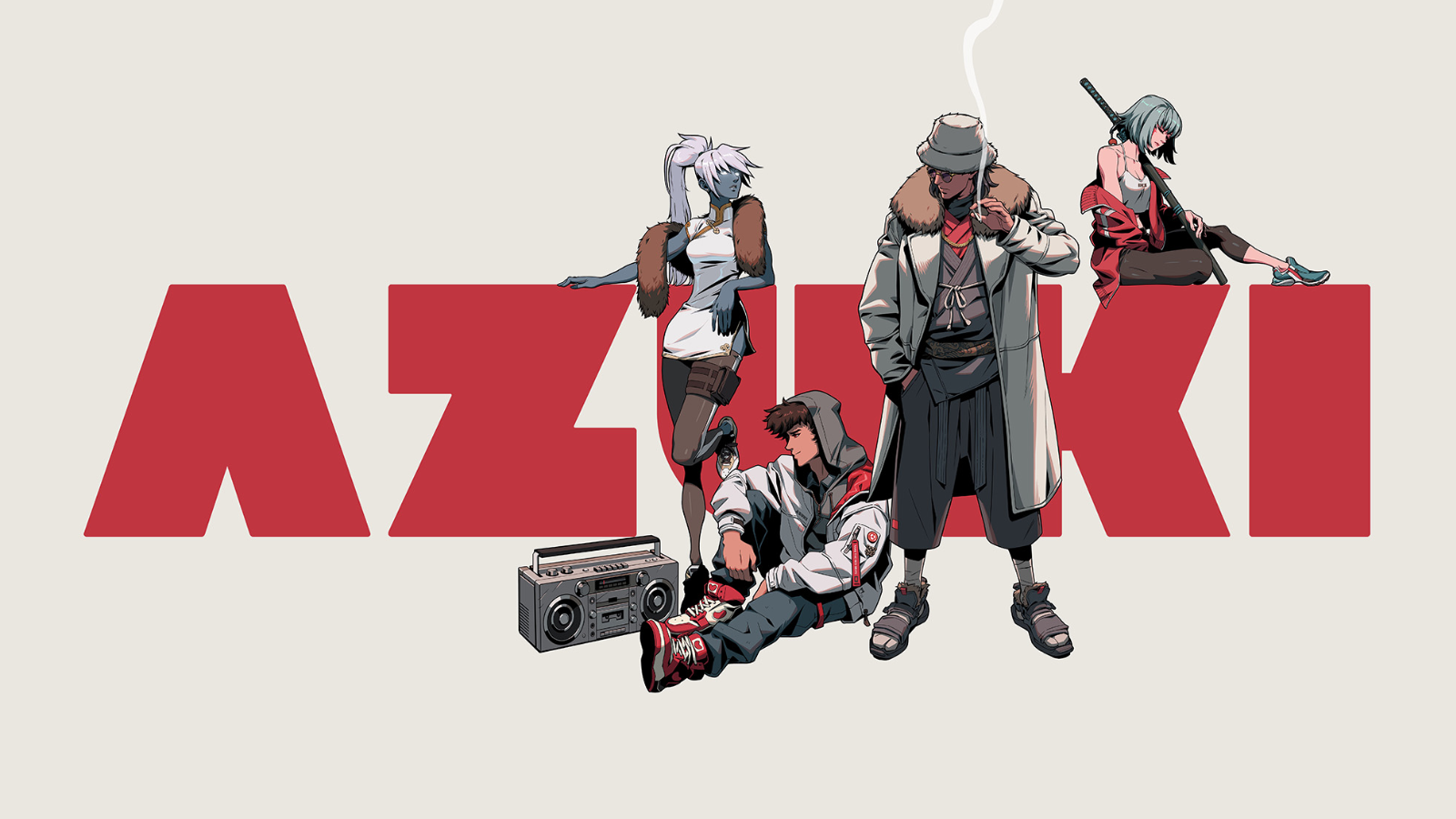 |
| Photo: Blockworks |
The Non-Fungible Token (NFT) ecosystem is moving fast. Hundreds of projects are created every day — some of them enjoy rapid success in the market due to their quality, uniqueness, communities, originality, art, and vision, while others flop quickly.
Talking about rapid success, Azukis — hand-drawn digital samurais and smoking skateboarders — have quickly turned into the next NFT blue chip.
What are Azuki NFTs?
Azuki is a digital brand mostly associated with its collection of 10,000 avatars released by a Los Angeles-based group of artists on January 12, 2022.
These avatars have unique characteristics based on anime-themed drawing, which has caught the attention of NFT enthusiasts around the world.
Owning an Azuki grants the user access to exclusive NFT drops, streetwear collabs, live events, and more as they become members of The Garden. The creators describe this place as a
“corner of the internet where artists, builders, and web3 enthusiasts meet to create a decentralized future.”
All Azukies have different traits regarding hair, background, clothes, and different wearables — some Azukies hold swords, a cup of coffee, a skateboard, or a Boombox.
Azuki Coming to Prominence
Azuki NFTs have become a pretty popular topic in the crypto community, not only for their anime-style aesthetic but also because they outranked some of the biggest names in the NFT market in terms of sales volume shortly after their release.
Azukies are just a few months old of being launched and have already garnered a considerable following. The collection is considered a blue chip within the NFT community among other popular collections like Bored Ape Yacht Club and CryptoPunks. Up until the time of this writing, its overall sales volume sits at slightly less than 190,000 ETH, currently worth some $540 million.
Who’s Behind Azuki NFTs?
Behind Azuki NFTs is Churi Labs, a startup composed of several members with vast experience in crypto, art, and gaming, all of them joining forces to bring a recognizable brand to the metaverse.
Most of them keep anonymous identities. And while their identities might be anonymous – their work speaks for itself.
The founder of the project goes by the online Twitter handle Zagabond. He claims to have worked with numerous industry-leading companies such as Google and various decentralized projects.
Other main members of the project are Hoshiboy, the lead designer, and Location Tba, a software engineer that claims to have previously worked at Facebook (META), and 2PM.FLOW – another engineer.
The Azuki team is highly secretive about who they are and their previous experiences. In this regard, Zagabond told Forbes:
“There’s a mystique and magic and allure to something where the project isn’t really about our identities and our past experiences”
Zagabond did say their identities would eventually be doxed, but for now, most of them will keep their personal information behind the curtains. Anonymous developers aren’t that uncommon in the crypto space, anyway – the team behind Bored Ape Yacht Club was also anonymous before getting doxxed.
Credited as a co-creator is also Arnold Tsang – a well-known conceptual artist from Toronto, Ontario. He is known for his previous work in the gaming industry, especially with the famous first-person shooter game Overwatch, backed by the American video game company Activision Blizzard.
Tsang, alongside the team, will work towards turning Azukies into something more than just digital collectibles — they want to build a sustainable business by bringing in new revenues to the company, including the launch of the Azuki clothing line, which is already being designed and issued, and hopefully reach TV shows and the film industry.
Why Are Azukies So Popular?
There are plenty of reasons why Azuki became a blue chip in the cryptocurrency community in such a quick fashion. Number one, in the eyes of most people, is art. It occupied an important niche within the field of NFTs – anime – and it set the standard for hundreds of projects after it. The Avatars are aesthetically pleasant, and in the words of Zagabond – it just “resonates” with the audience, especially in Asia, where anime is a lot more popular.
“I’ve had a couple of conversations with Asian investors who told me that this was the first NFT that they purchased.”
Tsang, on the other hand, says that Azukies capture the “rebellious culture of skateboarders,” adding that it connects well with the crypto community.
It’s also important to note that the overall market strategy of Azuki seems to be working pretty well. Once the series started catching speed, the team announced a much-anticipated airdrop to its holders, rewarding them for their loyalty while also furthering the Azuki brand and taking it to another level.
9. The Sand Box
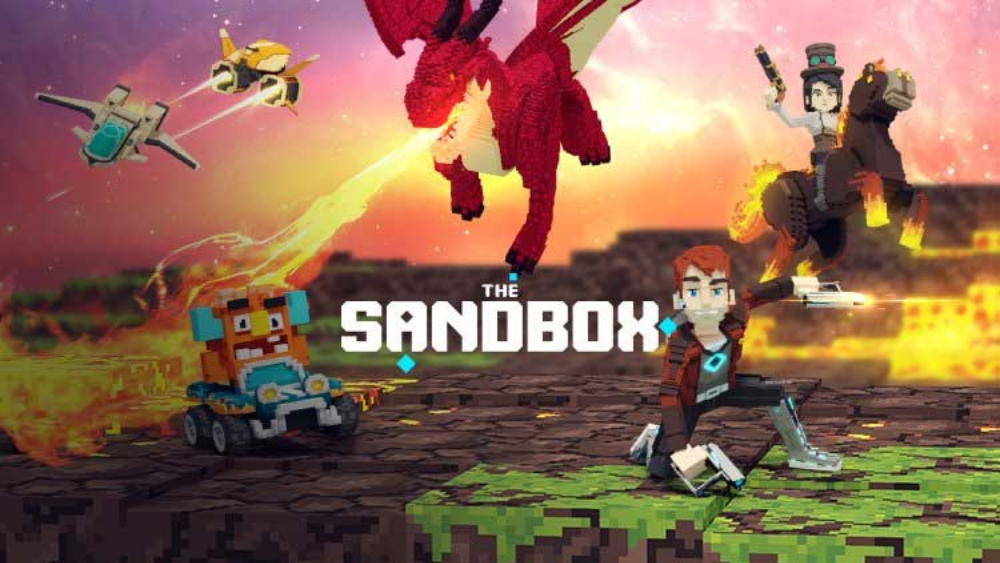 |
| Photo: Tino Group |
The Sandbox is an Ethereum-based decentralized NFT gaming metaverse that enables non-tech savvy users to create, sell, use, and monetize their own virtual reality NFTs. The crypto metaverse uses its native token SAND to underpin the entirety of the in-game economy.
NFTs are changing how we collect art, build communities, earn, and play. Many NFT-based projects are evolving into full-blown metaverses, and The Sandbox is sitting front and center. The brainchild of Pixowl co-founders Arthur Madrid and Sebastien Borget, The Sandbox is unique from other crypto metaverse projects in that its user-generated content ecosystem makes contributing to the metaverse a simple and intuitive task for players without any coding skills.
Welcome to The SandBox World
The Sandbox ecosystem consists of three integrated products and services that facilitate user-generated content creation:
- VoxEdit, a program for creating the NFT game assets.
- A Marketplace for selling and buying those assets.
- Game Maker, which players use to build their own game experiences without coding.
The Sandbox Crypto VoxEdit
The building blocks of The Sandbox game are 3D pixels called voxels– this term isn’t native to The Sandbox project, it specifically refers to virtual reality development. In The Sandbox, players construct their game experiences using these lego-like pieces, using the free Sandbox VoxEdit tool. It works similarly to the other popular voxel editors, like the popular Magica Voxel.
Characters, items, or other in-game assets created in Voxedit are referred to as ASSETS. They can be turned into NFTs, which are ERC-1155 standard. This standard enables creators to mint any number of copies of the same ASSET. This way, they can create a unique NFT that is ERC-721 standard, and at the same time, make multiple copies of it within the same smart contract.
The project introduces two tokens related to ASSETs: GEMs and CATALYSTs. Both are fungible ERC-20 tokens. GEMs are used to provide ASSET attributes; the more attributes an asset has, the more valuable it is. One GEM can give 25 attribute points to an ASSET.
CATALYSTs define assets’ tier and scarcity. They have four tiers as Common, Rare, Epic, Legendary. These tiers may have up to 25, 50, 75, and 100 attributes, respectively.
After creating the ASSET, GEMs and CATALYSTs can also be defined in Voxedit.
The Sandbox Marketplace
Understanding the difference between asset creators and players in the Sandbox metaverse is essential. Only asset creators who the Creator Fund accepts can upload their ASSETS to the project’s Marketplace.
The Sandbox Marketplace essentially allows players to monetize the digital assets they created by selling them to other Sandbox players.
Before importing the ASSETS to the Marketplace, creators must upload them to the InterPlanetary File System (IPFS).
Players can buy ASSETS from these verified creators from the Marketplace to build game experiences.
The Sandbox Crypto Token SAND
The SAND token (ERC-20) is the native utility token used in the Sandbox metaverse.
For example, to buy LANDs from public sales in-game, you’ll need to have SAND on your wallet. Game assets, Gems, and Catalysts must be all purchased from the Marketplace using SAND token. Asset designers can upload their creations to the Marketplace using SAND.
SAND is also a governance token. When the Sandbox DAO is launched, SAND holders will have the right to participate in the governance decisions, like feature prioritizations. SAND owners can vote themselves or delegate their voting rights to other players.
At the time of writing, SAND’s current market cap is more than $4.5B. There will be 3,000,000,000 SAND tokens in circulation. SAND can be purchased and sold on third-party cryptocurrency exchanges such as Gemini, Crypto.com, and Kraken, or on with ETH or DAI asset pairs on the Uniswap DEX,
SAND can also be staked via Uniswap (SAND/ETH) and mSAND/MATIC via Polygon for an advertised 36% to 113% APR*. To learn more about how liquidity mining works, check out our guide on liquidity pools.
The Sandbox team will occasionally host contests and events where users can gain SAND tokens by playing games in the metaverse. In the past, SAND was also distributed to the community via airdrops. In the future, Landowners will be able to stake SAND onto their LANDS to earn GEMs which they can then sell to asset creators.
*Not financial advice.
10. Imaginary Ones
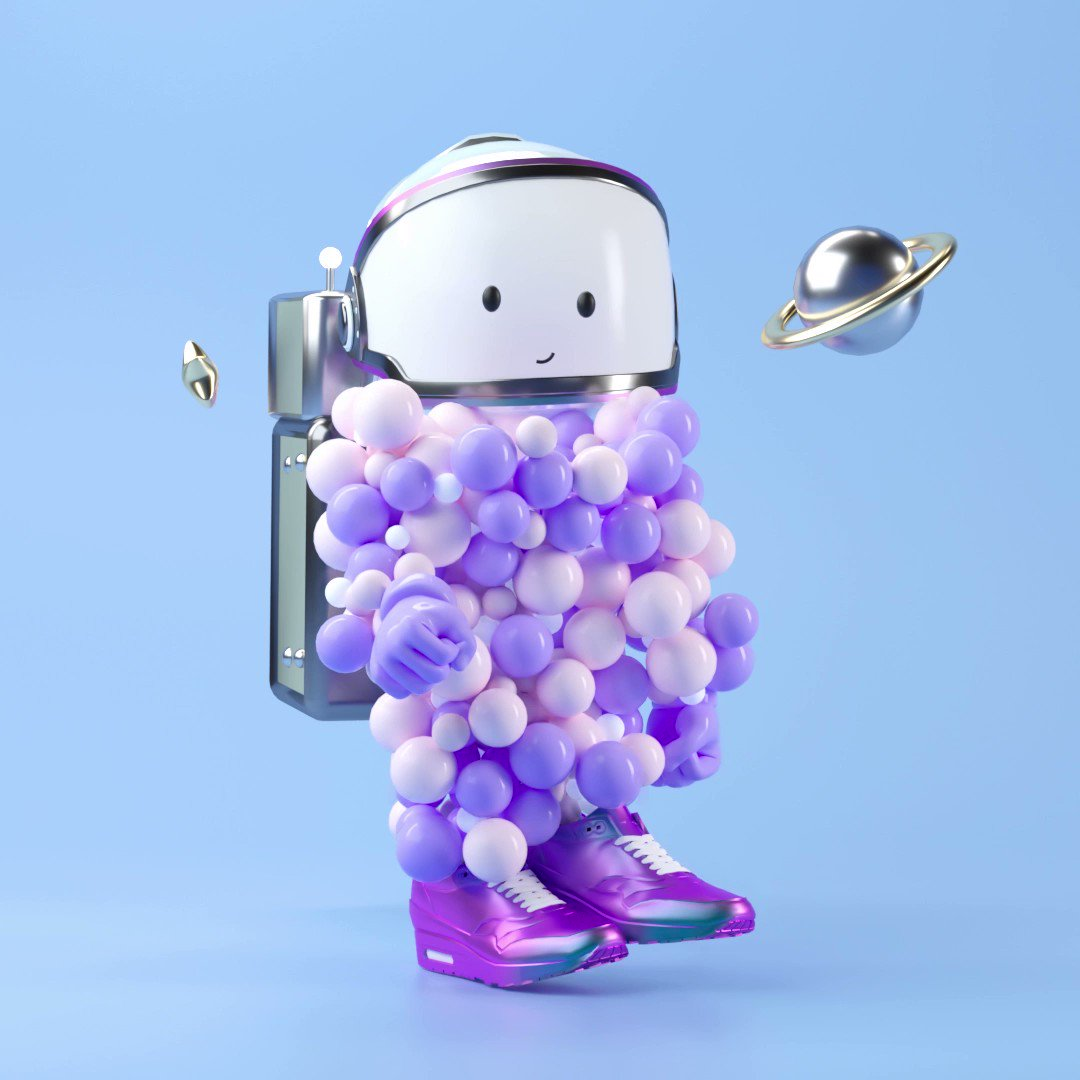 |
| Photo: Twitter |
The Imaginary Ones NFT project is one of the most widely anticipated new NFT projects of this year. The project had managed to gather immense popularity before its scheduled launch date.
As per the official website, The Imaginary Ones project includes 8888 unique NFTs built on the Ethereum blockchain. Not to be confused with the Invisible Friends NFTs, the project aims to spread positivity through art and intends to mainstream crypto NFT drive.
The team behind the NFT project is known to have collaborated with many famous brands including Nike, Samsung, Heineken, Spotify, L’oreal, etc. Moreover, the team has also roped in a famous renowned artist CMTTAT to work on the particular NFT project.
What Is Imaginary Ones NFT?
The Imaginary Ones NFTs, unlike other projects, will drop 8888 unique 3D NFTs. The artwork features GIF images of figures bearing balloon bodies and holding umbrellas in their hands.
As per its website, it hopes to spread positivity and creativity, stating:
When we were young, we dreamed of being superheroes, and anything was possible.
As time passed, the reality of life robbed us of our ambitions. Imaginary Ones dream to re-ignite that spark again.
Each NFT character has unique features exhibiting sophisticated and elegant artwork. Moreover, the characters will also be displayed wearing shoes and will carry numerous items in their hands which may include sticks, umbrellas, etc.
The official website also displays information highlighting the project's roadmap that further elaborates its plans. The project's roadmap teaser includes:
- Phase 1: Imagination Run Wild
- First NFT Drop and Community Building
- Phase 2: Imaginary Culture
- Second Drop and Brand Collaborations
- Phase 3: Imaginary World
- Metaverse Dream, Learn & Play Together
The project devs and team have requested the NFT enthusiasts to keep following their official social media platforms (Twitter, Instagram, Discord, and OpenSea) for more information as it comes in.
Imaginary One's NFT Mint Price
As per their official website, each Imaginary Ones NFT is costing nearly 0.2 ETH excluding gas fees. Users are required to connect their crypto wallets with the platform to buy Imaginary Ones NFTs.
NFT projects gearing up for launchRun-of-the-mill NFTs have grown stagnant and the overall market sentiment has shifted gears from traditional roadmaps and quick-flips to strategically investing in projects and teams who are set to deliver for what investors believe will be years to come. NFT investors are keeping their eyes peeled for projects that can seamlessly intersect culture and community while providing value. As such, creators and developers are once again steering away from static PFPs and aiming to bring more dynamic features to respective collectors. Take for example, Anata NFT, which launched on April 21 and is a collection of 2,000 avatars that are created for its owner to embody. Anata NFT uses a webcam to track and mimic facial expressions and other movements and the anime-inspired NFT is suited for the Web3 pundit who takes their anonymity seriously. Minting was conducted through a ranked auction starting at 0.25 Ether ($752) and was limited to 3 NFTs per wallet. The bid closed at 5.35 Ether, whereby 50% of the net proceeds will be allocated toward its DAO. The highest bid was 69.42 Ether ($209,306), with the second-highest bidder at 10 Ether ($30,150). This incredible niche NFT, while seemingly anticipated, is trading below the closing auction price on OpenSea for 3.49 Ether ($10,290). Auctions may be the new standard for NFT drops, as the most recently hyped NFT collection, Akutars, launched its public mint. In true Dutch auction form, every bidder pays the same price as the (last) lowest bid. Bearing this in mind, Akutars started its utch auction at 3.5 Ether ($10,552) and closed at 2.1 Ether ($6,211). However, a white hatter revealed that the contract was not properly written and was susceptible to exploit, and froze funds as to confront the Aku team developers about their mishap. As a result, all it took was a misplacement of one line of code for $34 million to be locked indefinitely. The team has since acknowledged its shortcomings and has proceeded to distribute funds to all bidders, including the 0.5 Ether discount granted to all Aku Mint Pass holders who placed a bid. The Aku Mint Pass NFT grants each owner an Akutar. Its all time-high rose over 4 Ether ($12,060) suggesting the community could price this in when the PFPs hit the secondary market. Sleeping giant Ragnarok is what seems to be a PFP collection intended to unlock access to its game-like metaverse. The multiplayer online (MMO) will combine elements of lore, Web3, social features and role-playing games and is set to launch on April 27. The dynamic NFTs are projected to enable owners to trade, earn and own digital real estate, and the public sale will be 4,500 Ronin Zeros at a Dutch auction that will begin between 0.5 Ether and 0.1 Ether. With new and old liquidity circulating in the NFT market, and highly-anticipated projects waiting to launch, it will be interesting to see where collectors make their consolidations and take their convictions. |
The Future of Non Fungible TokensHumans are naturally drawn to flaunting their wealth, whether it be through expensive watches, exotic cars or, now, NFTs. Non fungible tokens offer a novel way to verify the authenticity of rare and expensive items, making it easy to let everyone know you spent thousands of dollars on a JPEG. It’s likely that notable projects will survive in the long run, but it’s clear that there’s a lot of hype around NFTs at the moment. If you plan on investing in NFTs, make sure you do your own research and only invest what you can afford to lose. |
 Top 10 Least Popular Places in Europe That You Don't Want to Visit Top 10 Least Popular Places in Europe That You Don't Want to Visit France and Italy are fantastic, but what about all the countries in Europe that aren’t as popular? Check out the top 10 least popular places ... |
 Top 10 Least Popular Places in Canada That You Don't Want to Visit Top 10 Least Popular Places in Canada That You Don't Want to Visit Canada is known for its open spaces and naturally breathtaking landscapes. Where the country is so vast, there are secret destinations and least-visited places that ... |
 Top 20 Best Movies Of All Time - IMDb Ranking Top 20 Best Movies Of All Time - IMDb Ranking IMDb is one of the best-recommended sites for movie reviewing and voting. Keep reading to see the top 10 best movies of all time, according ... |
 Top 10+ Best Free Sites to Watch Horse Race Online Top 10+ Best Free Sites to Watch Horse Race Online In this post, we’re going to talk you through everything you need to know to get started watching on horses online. As we know you ... |


























